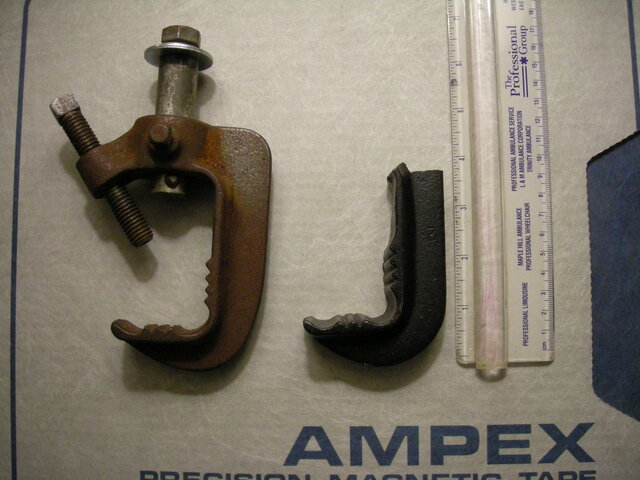That's what it looks like to me. My guess is that a rigging
cue was being executed when something snagged on the light and ripped the
whip out of the
junction box or the
fixture.
I see way too frequently when someone is doing something with rigging and they encounter resistance but persist on pulling the ropes harder to counter the resistance until eventually something gives or after a great deal of getting nowhere, they investigate further and discover what it was they were snagged on.
This brings up another good
safety point - whenever you are operating rigging (whether
counterweight or
electric hoist) and the
lineset isn't moving like you expect it to, STOP IMMEDIATELY. Bad things can happen when a
lineset gets snagged on other rigging. Most obviously, a snagged
lineset can tear lighting instruments, scenic elements, or other objects free from other rigging, bringing them crashing to the
deck.
A less obvious kind of failure can occur when a
lineset snags on its way in and the fly crew doesn't stop paying out the lift lines or a
lineset on its way out snags another
lineset and the fly crew keeps hauling on the
hand line. If a snagged
lineset coming in breaks free of the obstruction with slack in its lift lines, it will free-fall to the limit of the lift lines. The same thing can occur when a
lineset on its way out snags another
lineset and lifts it above its
trim point - when that
lineset works free of the moving
lineset, it will free-fall back to its
trim point. Either way, the
shock load on the rigging can easily exceed the tensile strength of the lift lines. As shown in
these examples, a 500-pound load free-falling 6 inches can exert the same stress on the lift lines as a static load of several THOUSAND pounds. Even if the lift lines don't break, they can be stressed past their elastic limit (typically about 60% of the
breaking strength), which physically deforms the cable so that it will not perform to its rated strength anymore, making replacement necessary.





